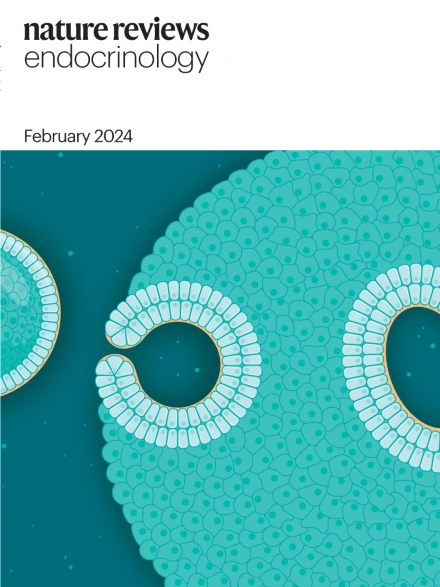mRNA-based enzyme replacement for propionic acidaemia
IF 40
1区 医学
Q1 ENDOCRINOLOGY & METABOLISM
引用次数: 0
基于mrna的酶替代治疗丙酸血症
丙酸血症是一种常染色体隐性代谢疾病,通常表现为新生儿呕吐、脱水、喂养问题和身体迅速衰退。如果没有及时的早期干预,症状可能发展为癫痫发作、昏迷甚至死亡。长期并发症包括生长衰竭、神经损伤、心脏和免疫功能障碍以及胰腺炎。丙酸血症是由分别编码丙酰辅酶A (CoA)羧化酶(PCC) α亚基和β亚基的两个基因PCCA或PCCB的致病变异引起的。PCC是一种线粒体酶,由PCCA和PCCB各6个亚基组成,可将丙酰辅酶a转化为甲基丙二酰辅酶a。PCC缺乏导致丙酰辅酶a和有机酸的毒性积累,导致中毒型代谢危机。除了肝移植,丙酸血症的治疗重点是生存,然后是生活质量;没有一种疗法通过代谢纠正来特异性地针对潜在的酶缺陷。2020年发表在《自然通讯》上的一篇论文报道了一种信使RNA (mRNA)疗法的发展,该疗法在丙酸血症小鼠模型中实现了持续的代谢纠正。研究人员的目标很简单:在体内产生功能性PCC酶,从而恢复PCCA或PCCB缺乏症患者的肝脏代谢功能。为了实现这一目标,研究人员设计了脂质纳米颗粒,装载了编码人类PCCA和PCCB的mrna。在用双mRNA负载脂质纳米颗粒处理的培养人成纤维细胞中,PCC的表达定位于线粒体,进一步优化PCCA与PCCB mRNA的摩尔比发现,在这些细胞中,1:1的比例产生最高的PCC酶活性。单次静脉注射双mrna负载的脂质纳米颗粒到丙酸血症小鼠模型后,肝脏中PCCA和PCCB的水平与人类肝脏中的典型水平相似。考虑到需要重复给药来维持PCC表达,研究人员在丙酸血症畸形小鼠中进行了两项长期研究:每3周静脉给药0.5或2mg /kg mRNA,持续3个月,或每月静脉给药0.5或1mg /kg mRNA,持续6个月。两项研究均显示肝脏PCC活性呈剂量依赖性增加,血浆中主要生物标志物(如2-甲基柠檬酸盐、3-羟基丙酸盐和丙酰肉碱与乙酰肉碱的比值)降低,未观察到不良反应,表明良好的耐受性。然而,该研究有一些局限性:它没有评估治疗小鼠是否产生针对人类PCC的抗体,并且丙酸血症患者的许多症状在丙酸血症半胚小鼠中不存在,这两者都可能限制这些研究结果的临床转化。
本文章由计算机程序翻译,如有差异,请以英文原文为准。
求助全文
约1分钟内获得全文
求助全文
来源期刊

Nature Reviews Endocrinology
医学-内分泌学与代谢
CiteScore
42.00
自引率
0.70%
发文量
158
审稿时长
6-12 weeks
期刊介绍:
Nature Reviews Endocrinology aspires to be the foremost platform for reviews and commentaries catering to the scientific communities it serves. The journal aims to publish articles characterized by authority, accessibility, and clarity, enhanced with easily understandable figures, tables, and other visual aids. The goal is to offer an unparalleled service to authors, referees, and readers, striving to maximize the usefulness and impact of each article. Nature Reviews Endocrinology publishes Research Highlights, Comments, News & Views, Reviews, Consensus Statements, and Perspectives relevant to researchers and clinicians in the fields of endocrinology and metabolism. Its broad scope ensures that the work it publishes reaches the widest possible audience.
 求助内容:
求助内容: 应助结果提醒方式:
应助结果提醒方式:


